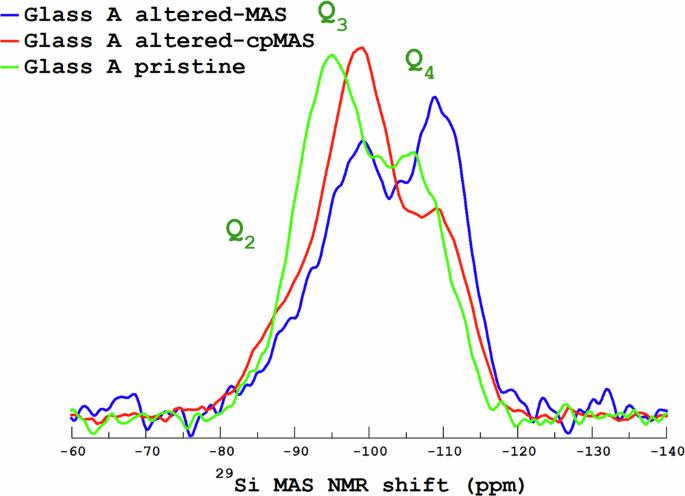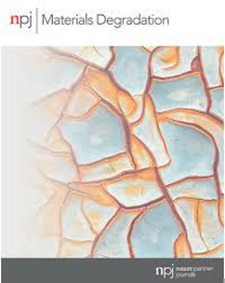用于食品和化妆品包装的商用硅酸盐玻璃的结构和耐久性比较研究
IF 7.6
2区 材料科学
Q1 MATERIALS SCIENCE, MULTIDISCIPLINARY
引用次数: 0
摘要
我们对四种商用玻璃成分进行了调查,以了解它们在当前和未来食品接触材料法规下的变化机理。铅水晶(精细玻璃器皿)、钠钙玻璃(食品和化妆品容器)、硼硅酸盐玻璃(炊具)和钡玻璃(餐具)的粉末和板坯在 pH = 2.4 和 70 °C 的醋酸(体积分数为 4%)中被改变了 3 年。浸出液通过 ICP-AES 进行分析,而玻璃板则通过 ToF-SIMS 和椭偏仪进行研究。结果表明,在酸性介质中,硅酸盐网络的聚合以及玻璃成分影响了碱和土碱元素的改变速率和消耗深度。然而,无论玻璃的结构和成分如何,在相同的改变条件下,从硅的释放量测得的水解速率仍然相似。就铅晶玻璃而言,在改变过程中观察到硅酸盐网络的再聚合。本文章由计算机程序翻译,如有差异,请以英文原文为准。

Comparative study of the structure and durability of commercial silicate glasses for food consumption and cosmetic packaging
Four commercial glass compositions were investigated to understand their mechanisms of alteration in light of the current and future regulations on food contact materials. Lead crystal (fine glassware), soda-lime (food and cosmetic containers), borosilicate (cookware) and barium glass (tableware) powders and slabs were altered for 3 years, in acetic acid (4% vol) at pH = 2.4 and 70 °C. The leaching solution was analyzed by ICP-AES while glass slabs were investigated by ToF-SIMS and Spectroscopic Ellipsometry. As a result, in acidic medium, the polymerization of the silicate network as well as the glass composition impacted the alteration rates and depleted depths of alkalis and earth-alkalis elements. Yet the rate of hydrolysis measured from the release of Si, remained similar under identical alteration conditions, whatever the glass structure and composition. For lead crystal glass, repolymerization of the silicate network was observed in the course of alteration.
求助全文
通过发布文献求助,成功后即可免费获取论文全文。
去求助
来源期刊

npj Materials Degradation
MATERIALS SCIENCE, MULTIDISCIPLINARY-
CiteScore
7.80
自引率
7.80%
发文量
86
审稿时长
6 weeks
期刊介绍:
npj Materials Degradation considers basic and applied research that explores all aspects of the degradation of metallic and non-metallic materials. The journal broadly defines ‘materials degradation’ as a reduction in the ability of a material to perform its task in-service as a result of environmental exposure.
The journal covers a broad range of topics including but not limited to:
-Degradation of metals, glasses, minerals, polymers, ceramics, cements and composites in natural and engineered environments, as a result of various stimuli
-Computational and experimental studies of degradation mechanisms and kinetics
-Characterization of degradation by traditional and emerging techniques
-New approaches and technologies for enhancing resistance to degradation
-Inspection and monitoring techniques for materials in-service, such as sensing technologies
 求助内容:
求助内容: 应助结果提醒方式:
应助结果提醒方式:


